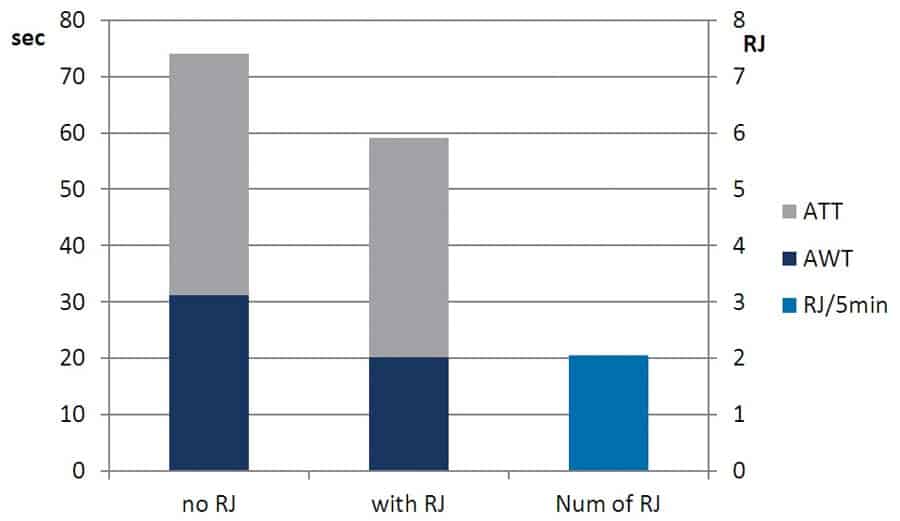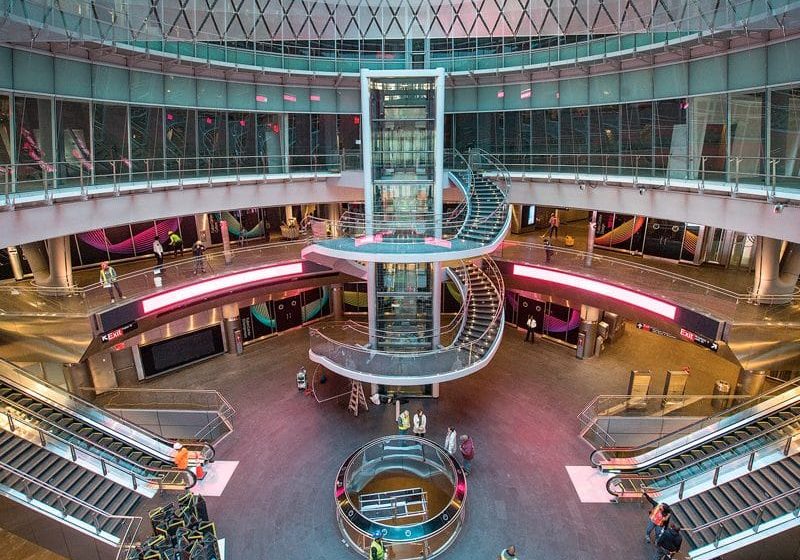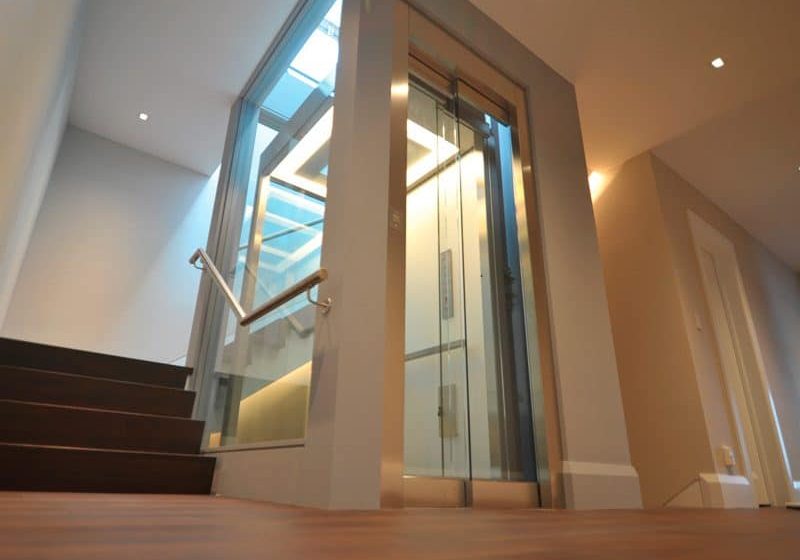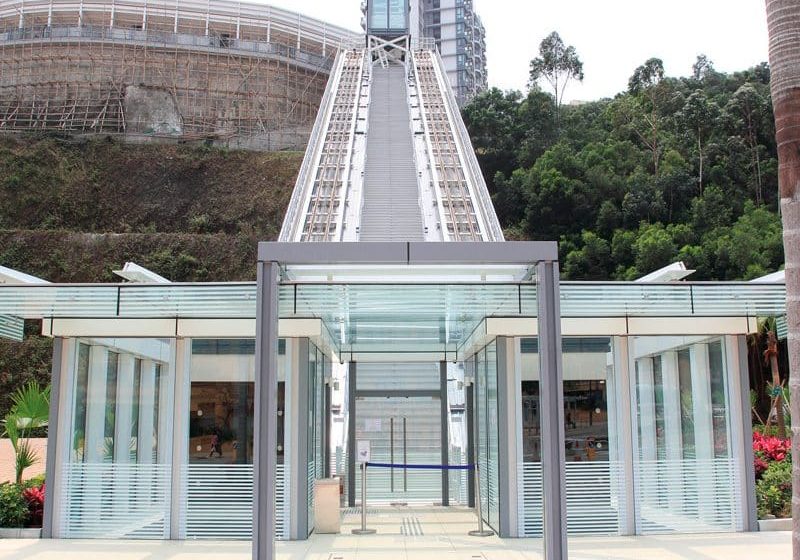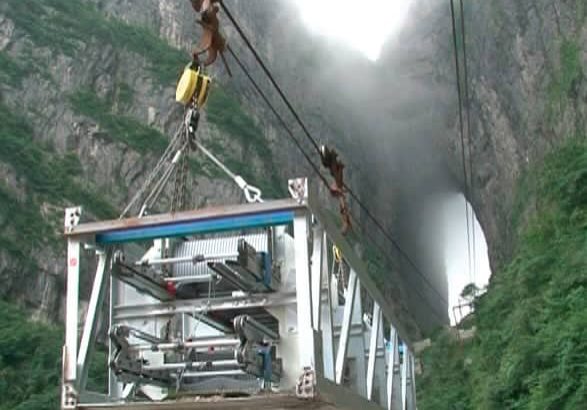How reverse journeys can aid destination control when considering passenger perception and behavior
by Stefan Gerstenmeyer and Dr. Richard Peters
This article was first published at the Fourth Symposium on Lift & Escalator Technologies (www.liftsymposium.org) prior to editing by ELEVATOR WORLD. . . . Editor
When a passenger gets into a lift, he or she expects to be taken in the direction of his or her destination. A reverse journey, where the passenger is initially taken up when the call is in the down direction, (or vice versa) can be disconcerting. Reverse journeys can be avoided with destination control, but only if the system is allowed to refuse calls. Refusing calls, with a “no lift available, please try again later” message or indication is frustrating for passengers. This article explores why destination control systems (DCSes) are susceptible to reverse journeys and how lift planning affects this issue. Where accepting a reverse journey is the best compromise, appropriate indication can help avoid passenger confusion. Allowing reverse journeys has an impact on handling capacity and quality of service. These factors are investigated using simulation.
Background
The control of a group of lifts to serve registered hall and car calls can be divided into two levels.[1] The higher-level elevator dispatching problem can be considered an assignment problem. The lower level is self contained and is traditionally solved with collective control.[2] The lower level describes the control algorithm of a single car to serve its registered calls based on a set of rules and constraints:[2-4]
- Do not bypass a car call/destination of a passenger
- Do not transport passengers away from their destination
- Only stop at a floor because of a car or hall call
These rules alleviate the psychological aspects passengers feel by avoiding reverse journeys and unnecessary blind stops.
Reverse Journeys in Conventional Systems
Reverse journeys are not difficult to avoid with conventional collective control where there are up and down landing call buttons. EN 81-70 requires direction indicators for conventional control systems.[5] In most cases, the car allocation is only revealed shortly before a car arrives at the landing: passengers traveling up get into the car when the lift stops on its way up with the up indicator lit; passengers traveling down get into the car when the lift stops on its way down with the down indicator lit. This means that the same car can be allocated both an up and a down call on the same floor without resulting in reverse journeys.
Reverse journeys do occur, but only when passengers do not recognize the announcement or if they deliberately choose a reverse journey. Sometimes, choosing a reverse journey can result in a shorter time to destination, and passengers’ recognition of this has been observed in heavily loaded systems. Some passengers press both push buttons with the hope of a faster car arrival. Sometimes, passengers enter a lift despite its announcing the opposite direction. In these cases, passengers get into the lift either knowing they will ultimately get to their destination, or do not see/understand the announcement.
Reverse Journeys in DCSes
In DCSes, the passenger selects the floor to which he or she is traveling and is immediately told which car to use. Each lift entrance needs to be individually marked to be easily identified.[5] When the car arrives, no direction information is provided. Since the passengers are waiting in front of the allocated lift, hall gongs and lanterns are not needed.[6] Some installations include indicators to reassure passengers that they are waiting in front of the correct car for their destination. When the car arrives, it is normal to have an in-car indication of the planned stops.
Reverse journeys can be avoided with destination control but only if the system is allowed to refuse calls.[7] Refusing calls, even if with a “no lift available, please try again later” message or indication, is frustrating for passengers. It can also lead to a significant increase in waiting times. For these reasons, people designing and configuring destination-control dispatchers sometimes allow reverse journeys.
Reverse Journey Scenarios
Figure 1 illustrates three separate scenarios where accepting a new allocation will cause a reverse journey. In scenario A and C, the new call causes a reverse journey for existing passengers. Scenario B causes a reverse journey for the new call. In scenario C the reverse journey is caused by the combination of three calls.
Some systems may stop twice at the same floor. For example, in scenario A, the lift could stop at the ground floor in both the down, then up direction. However, as passengers enter the allocated lift when it opens the doors independent from any direction indicators, in practice, the second stop is not required and can be avoided. However, space in the car for passengers who start their travel time in the wrong direction should be considered.
In many cases, the reverse journey can be avoided simply by choosing another car. However, a combination of the scenarios described happening together results in times when the choice is either to accept the reverse journey, or refuse calls with a “no lift available, please try again later” message. This is illustrated for two lifts in Figure 2 but also occurs with larger groups when there are more calls.
Reversals and Performance
When DCSes are saturated,[9] not all passengers receive an immediate allocation,[8] and the system refuses calls. Excluding allocations that cause reverse journeys limits the dispatcher’s options and makes refusals more likely at lower levels of demand, prior to saturation. Refusals are more irritating to passengers than reverse journeys.[7] So, the option to allow reverse journeys should be considered.
Lift performance has been compared in DCSes in which reverse journeys are and are not permitted; it was shown that the results for the average time to destination are better[10] if reverse journeys are allowed. However, the work was based on a single-car operation and does not discuss the dispatching problem.
In this article, the effect of reverse journeys on a lift group is considered, applying the Estimated Time to Dispatch (ETD) algorithm.[11] The sample building has six 1600-kg-capacity lifts at 2.5 mps speed serving 14 floors above the entrance level(s) with a population of 60 persons per floor (20 persons on top floor). For simplicity, the initial results are based on a 4-hr. simulation with constant traffic demand of 12% of population per 5 min.
Reverse Journeys in Office Buildings
Morning Up-Peak
In an office building during the morning up-peak, the traffic is typically split 85% incoming, 10% outgoing and 5% interfloor.[12] For the sample office building with a single entrance, Figure 3 compares average waiting time and transit time results, with and without reverse journeys allowed. Where reverse journeys are allowed, the number of reverse journeys per 5 min. is also plotted.
Lunch Peak
During the lunch period, a typical traffic split is 45% incoming, 45% outgoing and 10% interfloor.[12] Figure 4 shows simulation results for this lunchtime split, with and without reverse journeys. As would be expected intuitively, with the traffic more evenly divided in the up and down directions, there are more reverse journeys (if allowed). As the dispatcher optimization process only chooses a reverse journey when it improves the time to destination, the performance improvements are more significant than for up-peak traffic.
Implications of Design Choices
Not All Lifts Serve All Floors
A common-sense rule of group lift designs is that all lifts in a group should serve the same floors.[6] Ignoring this rule is generally a false economy. If it is, for some reason, not possible to let all lifts serve all floors, it is a good choice to use a DCS, as the system knows which lift serves a passenger’s arrival and destination floors.[7] However, reverse journey situations are more likely, because fewer lifts are available for some trips. An example is given in Figure 5, in which the new call can only be served by L3. An allocation of the new call causes a reverse journey for the passenger waiting on floor 2. If the control system excludes allocations with reverse journeys, the call must be refused.
To demonstrate the effect of one lift not serving the top floor, the simulation yielding results in Figure 4 was repeated, with only one lift serving the top floor. The results in Figure 6 demonstrate the impact on performance by not having all lifts serve all floors. However, by allowing reverse journeys, the degradation of performance is reduced.
Multiple Entrance Floors
Some buildings have multiple entrance floors. These multiple entrance floors can be at different street levels or serve car parks in basement floors below the main entrance lobby. An entrance floor becomes relevant if there is a significant number of passengers boarding the lifts. Multiple entrance floors result in additional stops, which has an effect on the round-trip time, impacting both quality of service and handling capacity. Shuttle lifts or escalators carrying people from the basement floors to the main entrance help eliminate these additional stops.[6]
Buildings with multiple entrance floors with mixed traffic are particularly susceptible to reverse journeys at peak times. This is because any lift stopping at an upper entrance for a passenger to alight is also likely to have been allocated an up call from this entrance. Figure 7 shows the number of reverse journeys for the sample building with a single and double entrance. For the double-entrance simulation, the entrance bias was 50% to each floor. The traffic was split 45% incoming, 45% outgoing and 10% interfloor. If reverse journeys are not allowed, there is a corresponding increase in waiting time.
Restaurant, Meeting and Other Busy Floors
Many office buildings have dedicated staff restaurants[13] that affect morning and lunch traffic. Restaurants, meeting rooms and other busy floors are preferably located in the basement or on the second floor, and should be served separately by escalators or shuttle lifts. The traffic of restaurant floors can be treated as additional entrance floors.[6] Strakosch recommends never locating a restaurant/cafeteria at an intermediate floor of a lift group.[6] As with multiple entrance floors, these busy floors are particularly susceptible to reverse journeys at peak times.

Figure 5: Reverse journeys become more likely when not all lifts serve all floors. 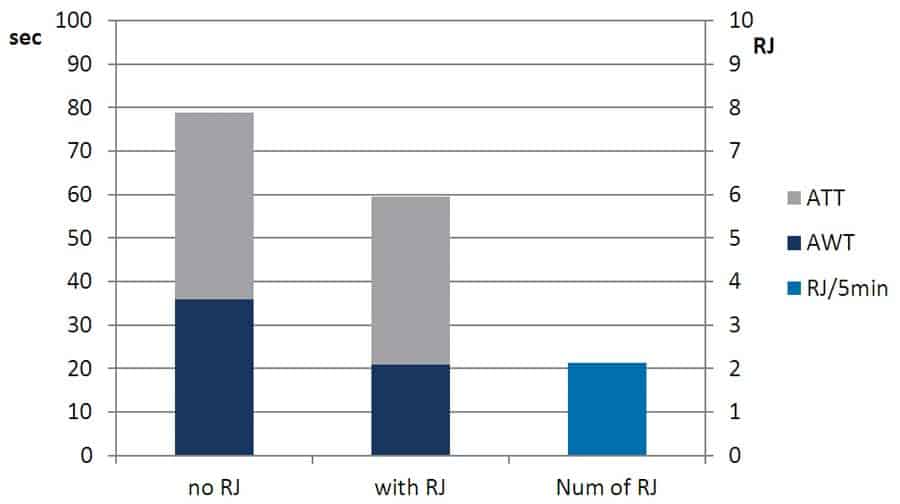
Figure 6: Results showing that allowing reverse journeys reduces the degradation in performance caused by not all lifts serving all floors. 
Figure 7: Results showing the multiple entrance floors are more susceptible to reverse journeys. 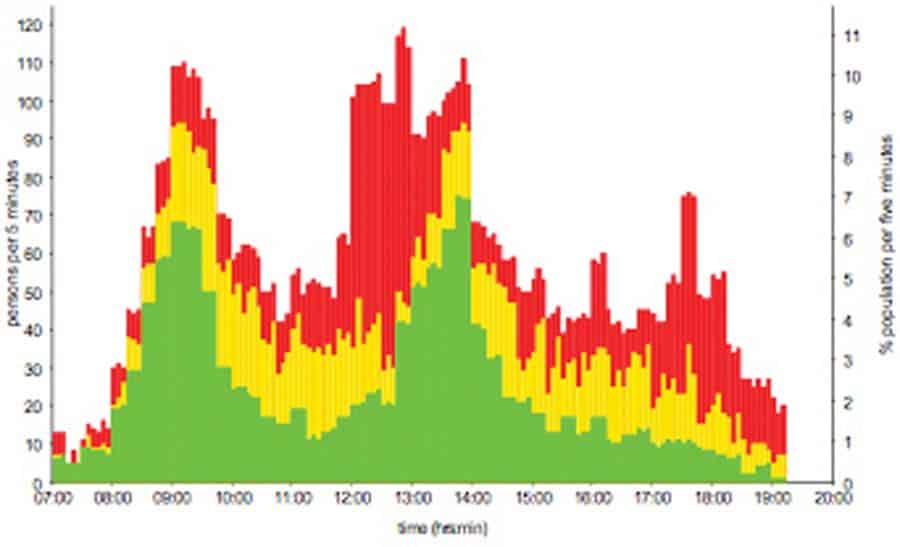
Figure 8: Siikonen full-day office template[14] 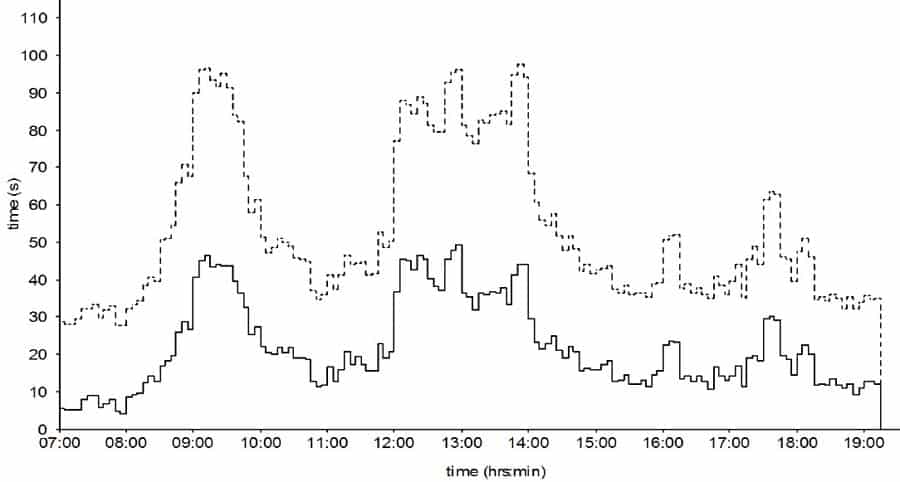
Figure 9: Waiting time (solid line) and time to destination (dotted line) without reverse journeys 
Figure 10: Waiting time (solid line) and time to destination (dotted line) allowing reverse journeys
Design Application
The simulation in earlier sections are indicative of which factors affect the number of reverse journeys that occur if allowed, or, if they are not, the impact on waiting and transit times. However, it is difficult to generalize these results, as there are many parameters, and the performance of lift systems is not linear. For building-specific advice, demand templates based on actual traffic demand are more useful. Figure 8 provides a sample office building demand template.[14] This has been applied to a six-car lift group serving 14 floors above two entrance levels (average of four runs). Without reverse journeys, the waiting and time to destination plotted throughout the working day are as indicated in Figure 9.
Allowing reverse journeys reduces the peak average waiting time (for the worst 5 min.) by more than 10 s. The results also show that reverse journeys are more frequent during busy times. The waiting time and time to destination plotted throughout the working day in this situation are as indicated in Figure 10. The number of reverse journeys plotted by time of day in this situation is given in Figure 11.
User Interface
If reverse journeys are allowed, the user interface needs to be considered in terms of quality of service.[15] If passenger travel begins in the wrong direction (reverse journey), reassurance indicators reduce the anxiety of passengers and can explain that the reverse journey is not a system fault. Anxiety reduction will make waits feel shorter.[16] Also, the quality of the user interface and how the information is displayed are important to provide clear information from the lift system. Current displays do not show the stopping order; if they did, reverse journeys are easier to understand and are more likely to gain acceptance by the passengers. Suggested formats for displays are given in Figure 12.
Conclusions/Further Work
Reverse journeys can be avoided with destination control but only if the system is allowed to refuse calls. Refusing calls is even more frustrating for passengers. Reverse journeys (or longer waiting time resulting from not accepting reverse journeys) are particularly prevalent with mixed traffic, at peak times, with multiple entrance floors, where not all lifts serve all floors, with restaurants and other busy floors, and in under-lifted buildings.
Allowing reverse journeys reduces average waiting time and time to destination, but may confuse passengers. Improved indication can mitigate this problem. Though reverse journeys are not desirable, they sometimes represent the best compromise. Therefore, the choice the dispatcher makes whether to accept a reverse journey needs to consider more than the optimization of a combination of waiting and transit times. The acceptance of reverse journeys will be added as a consideration with the dispatcher algorithm to provide improvements in quality of service based on best understanding of the psychology of waiting and traveling in lifts. Future dispatchers will make intelligent decisions about whether savings in waiting and transit time justify the drawback of reverse journeys.
References
[1] Sorsa, J. S.; Ehtamo, H.; Siikonen, M.; Tyni, T.; and Ylinen, J. “The Elevator Dispatching Problem,” Transportation Science, September 2009.
[2] Barney, G. Elevator Traffic Handbook, London: Spoon Press (2003).
[3] Levy, D.; Yadin, M.; and Alexandrovitz, A. “Optimal Control of Elevators,” International Journal of Systems Science, 8 (3), 301-320 (1977).
[4] Siikonen, M. “Planning and Control Models for Elevators in High-Rise Buildings,” Research Reports A68. Helsinki University of Technology, Systems Analysis Laboratory (1997).
[5] EN 81-70:2003 (2003).
[6] Strakosch, G. and Caporale, R. The Vertical Transportation Handbook, Fourth Edition, Hoboken New Jersey: John Wiley & Sons, Inc. (2010).
[7] Peters, R. Elevator Traffic Analysis & Simulation, 1st Edition, Chapter 7 Destination Control (draft, 2013).
[8] Finschi, L. “State-of-the-Art Traffic Analyses,” Elevator Technology 18: Proceedings of Elevcon 2010, the International Association of Elevator Engineers(2010).
[9] ThyssenKrupp. “Saturation Control for Destination Dispatch Systems,” authors/inventors: R. Smith and R. Peters, WO 2009032733 (2009).
[10] Tanaka, S.; Uraguchi, Y.; and Araki, M. “Dynamic Optimization of the Operation of Single-Car Elevator Systems with Destination Hall Call Registration: Part I. Formulation and Simulations,” European Journal of Operational Research, 167 (2), 550-573 (2005).
[11] Smith, R. and Peters, R. “ETD Algorithm with Destination Dispatch and Booster Options” Elevator Technology 12: Proceedings of Elevcon 2002, The International Association of Elevator Engineers (2002).
[12] The Chartered Institution of Building Services Engineers (CIBSE) CIBSE Guide D: 2010 Transportation Systems in Buildings, London (2010).
[13] Peters, R.; Smith, R.; and Evans, E. “The Appraisal of Lift Passenger Demand in Modern Office Buildings,” Building Services Engineering Research & Technology, 32 (2), 159-170 (2011).
[14] Siikonen, M. “On Traffic Planning Methodology,” Elevator Technology 10: Proceedings of Elevcon 2000, the International Association of Elevator Engineers (2000).
[15] Smith, R. and Gerstenmeyer, S. “A Review of Waiting Time, Journey Time and Quality of Service,” Symposium on Lift and Escalator Technologies, Northampton, U.K. (2013).
[16] Maister, D. “The Psychology of Waiting Lines” (1985), (davidmaister.com/articles/the-psychology-of-waiting-lines,accessed February 12, 2014).
Get more of Elevator World. Sign up for our free e-newsletter.



